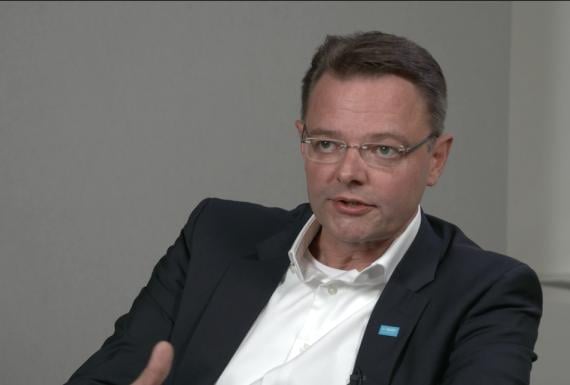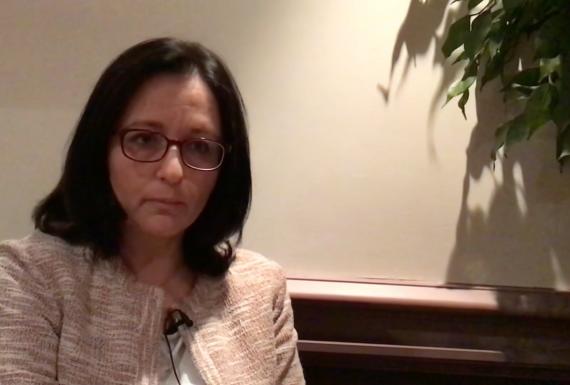Respecting human rights when things go wrong
Sometimes, things will go wrong. Even with good policies and processes in place.
How a company responds when this happens is key to whether it is - and is seen to be - respecting human rights. Stakeholders and international standards expect companies to focus on righting the wrong. Achieving a meaningful outcome – and effective remedy – for affected people. These situations also offer an opportunity for companies to build trust and deepen their relationships with key stakeholders.
Doing this well can be hard. But by taking a thoughtful approach to dealing with grievances, companies can help ensure they do right by the people affected by their business activities and meet stakeholders’ expectations.
What does dealing with grievances look like in practice?
Ways to identify grievances:
- Strengthen existing hotlines and community liaison processes, such as BASF's Community Advisory Panels.
- Develop and implement new grievance mechanisms – alone or in collaboration with other stakeholders.
- Build a culture of openness that empowers employees and suppliers to flag issues and concerns.
- Use human rights impact assessment, transactional due diligence and audit processes to identify issues and grievances.
Ways to respond to and address grievances:
- Use internal processes (including ombudspersons) to resolve grievances directly.
- Collaborate with other stakeholders (including business, government and civil society) to address specific issues.
- Participate in third party processes – such as OECD NCP, tribunal, court and arbitration processes.
- Take steps to prevent issues recurring once identified.
Appropriate processes to identify and respond to grievances will vary with context. Testing thinking and ways forward with external experts and civil society organisations can be helpful.
What do the UN Guiding Principles say about grievances?
The UN Guiding Principles on Business and Human Rights, or UNGPs, expect companies to provide for or participate in remedy when they have caused or contributed to human rights harms. Additionally, where a company is instead directly linked to harms, the UNGPs note that it may still wish to play a role in remedy – even though it does not have a responsibility to do so.
Key guidance on dealing with grievances includes:
- Companies should address adverse human rights impacts they are involved in, which requires taking adequate measures, where appropriate, for their remediation.
- To make it possible for grievances to be addressed early and remediated directly, companies should establish or participate in operational-level grievance mechanisms.
- Collaborative initiatives, including industry initiatives, should ensure the availability of effective mechanisms through which affected parties can raise concerns.
- To ensure their effectiveness, non-judicial grievance mechanisms should be legitimate, accessible, predictable, equitable, transparent, rights-compatible, a source of continuous learning and based on engagement and dialogue.
See Guiding Principles 11, 22 and 29 – 31 for more.
Importantly, whilst companies may have a responsibility to provide for or participate in remedy, States also play a role here. They have an international legal duty to ensure access to effective remedy for affected people. More information about this is set out in Pillar III of the UNGPs.
Insights from business practice
-
Companies deal with grievances in many different ways
In recent years, there has been a strong focus on companies’ operational-level grievance mechanisms - from both business and other stakeholder groups. These mechanisms can include, for example, hotlines, community and product-level processes, internal ombudsperson processes and worker voice programmes. Companies have been working to identify and address gaps in their existing mechanisms. However, companies also deal with grievances in other ways. For example, a grievance may come to light through a company’s human rights impact assessment or audit processes.
For some human rights issues (for example the systemic challenges underlying some instances of child labour), grievance mechanisms may not be the best starting point for thinking about remedy. In these situations, companies may need to think more creatively about how to achieve a meaningful outcome for affected people – acting alone or, commonly, in collaboration with others.
-
Grievance mechanisms can be evolved and scaled over time
A company might start by identifying what hotlines and mechanisms are already in place, and assessing the extent to which these already enable human rights-related grievances to be identified and addressed. Building on this, "gap assessments" can help companies compare existing mechanisms with the effectiveness criteria set out in Guiding Principle 31.
Guidance can then be developed and shared with different parts of the business on how to strengthen existing mechanisms. Insights and innovations can also be generated at an operational level – and it can be valuable to find ways to transfer this knowledge up and across the company.
In some situations, new grievance processes will be needed. Some companies find it helpful to start with a “pilot mechanism” to learn about what works and what doesn’t. Once an effective approach has been developed, this pilot can be rolled out more widely across the company. There can be tensions between a desire to harmonise grievance processes across the company and the need for mechanisms to be context-specific (i.e. tailored to particular risks, cultural dynamics and institutions in different regions).
-
It can be helpful to coordinate approaches to grievance across the value chain
Business partners at different points of the value chain can be involved in a grievance or human rights harm that a company is dealing with. Where this is the case, it can be helpful for companies across the value chain to coordinate on how human rights risks are identified and managed - and how grievances are dealt with when they emerge.
This approach may be useful where, for example, harms originate deep in a company's supply chain or emerge from customers’ use of products. It can also result where different parts of a value chain take on responsibility for a site or operation (such as an infrastructure or extractive project) at different points in time.
-
Strengthening a grievance mechanism can result in more grievances being raised
This can be a good sign. If a grievance mechanism is not being used, it does not necessarily indicate that there are no grievances. Instead, it can indicate that people don’t know about – or don’t trust – the mechanism. Similarly, even if people are using a mechanism, you should not assume that all intended users know about and trust it.
Finding ways to improve trust and knowledge in a mechanism can be challenging. Distrust may result from fear of retribution. Low-levels of use of a mechanism can also occur where multiple processes are available and people are confused about which to use. To manage expectations internally, it can be a good idea to prepare colleagues (and senior leaders) for the likelihood that grievances will increase if efforts to strengthen it are successful.
-
Understanding power disparities is key to dealing effectively with grievances
When things go wrong, the power disparity between stakeholders can be vast. Between companies and affected people, or even within a group of affected people. These disparities can shape how grievances are dealt with, what outcomes are achieved and how the company’s response is perceived by others.
Finding ways to identify, understand and be sensitive to these power disparities can help companies find more effective ways to respond to grievances.
-
It can be hard for companies to communicate about how they have responded to a particular grievance
Grievance processes can be sensitive where they raise issues of legal liability – or where an issue is subject to court or tribunal processes. Sensitivities can also arise due to the need to respect the privacy and wishes of affected people.
Accordingly, it will often be important to find ways to navigate the tensions between “showing” that the company is responding effectively to human rights issues and dealing appropriately with sensitive or confidential information.
Looking forward: delivering meaningful outcomes to affected people
For many people, how a company deals with grievances gets to the heart of respect for human rights. Improving access to remedy makes human rights real, in a very tangible way.
Dealing with grievances and improving access to remedy is one of the most complex – and most contested – aspects of efforts to advance corporate respect for human rights. Progress has been made. But there is still a long way to go.
Places to start include:
Building a stronger understanding of what “effective remedy” means in practice: There is a lack of clarity about what an effective remedy is. Whether it focuses on process or outcome (or both). And who decides whether a remedy is effective. The UN Working Group’s 2017 report made a valuable contribution to this discussion, and offers a starting point for working out how to navigate these questions.
Advancing practice and dialogue across industries: Industries tend to deal most with the types of grievance that reflect their key human rights challenges. For example, the extractive industries have significant experience engaging with communities. Manufacturers have learned a lot about engaging with workers. Cross-industry dialogue can help fill gaps in experience and advance practice.
Achieving greater consensus on the practical application of key standards: The UNGPs incorporate a focus on resolving issues quickly and early, drawing on a web of remedial mechanisms. However, more work is needed to understand how – and if/when – different processes join up. We also need a stronger understanding of the distinct, if overlapping, roles of States and companies in improving access to remedy.





